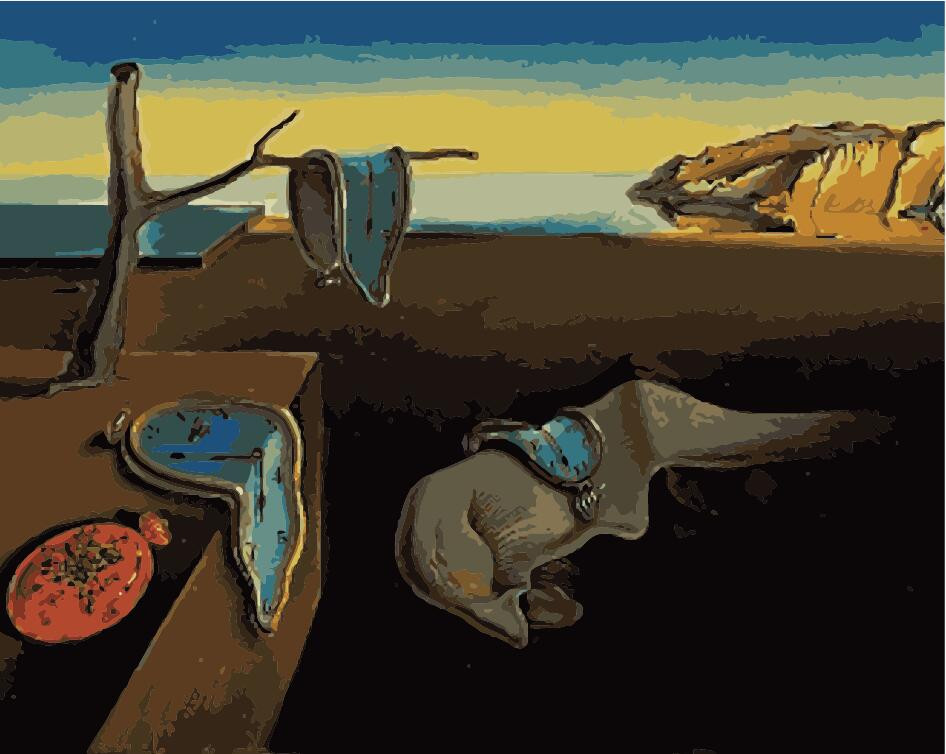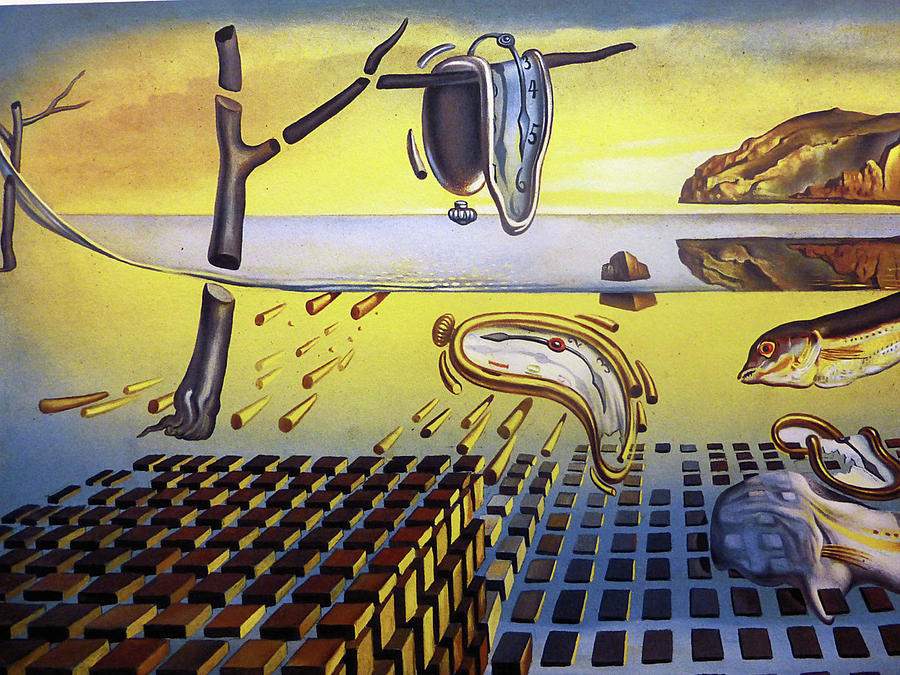

Biography is displayed because the painting has elements of Salvador Dali’s life. Iconography is shown by using the meaning of watches in our reality to interpret their meaning in the painting. The psychoanalytic approach utilizes other methodologies in order to gain a psychological understanding of the artwork and how it impacts the viewer. In psychoanalysis, imagery is derived from dreams, neurological symptoms, or jokes through which the unconscious mind is revealed. Psychoanalysis helps us understand how creativity, dream imagery and real history may work together in production of Surrealist paintings. The methodology I would like to use in interpreting Salvador Dalí’s The Persistence of Memory is psychoanalysis, which is a division of psychology founded by Sigmund Freud. There is bright sunlight on the top right portion and shadows as your eyes travel to the left of the painting. Lastly, this artwork uses analogous hues of yellow, brown and blue with varying values and intensities. The blue watch on the left platform looks as though it is sliding off the platform.

Salvador Dalí manipulated the reality of shapes in The Persistence of Memory because we know clocks to be round but, in the painting, they are biomorphic (moving as if they are living creatures). Regarding line detail this artwork consists of thin, angular lines capturing the ridges of the cliffs, thin lines representing delicate eyelashes of the humanoid, and stiff vertical lines on the tree. Third, the cliffs (captured from environments of Dali’s home) and ocean create an illusion of depth. The platforms and cliffs are depicted as hard objects to symbolize reality. The pocket watches are depicted as pieces of cheese because they are melting, producing a psychological effect of time diminishing or fading. Dalí uses ‘hard and soft’ objects to give a further distinction to the objects. Also, the pocket watch is painted a brighter golden-orange intensity as opposed to the ‘melting’ lighter blue watches. The watch on the bottom left of painting is large but you still notice the tiny ants positioned right on top of the clock. Next, asymmetrical balance is present in this painting because the objects are positioned juxtaposed but still maintain balance. Also, the human-like “creature” on the middle foreground of painting is shown in a diagonal plane. The dead tree emerging from the far side of the box has horizontal and vertical orientation. To begin, Dalí creates multiple planes, producing a box which we see in the bottom left corner of the canvas. The composition of The Persistence of Memory consists of planes (flat surfaces giving direction in artwork), asymmetrical balance, illusions of depth, impeccable line detail, manipulation of shapes, and dreamlike colors.

Every decision regarding abstract objects, element, medium, representation, and illusion work together to convey Dalí’s message so precisely but in unanticipated ways also. His attention to detail was exquisite because the olive-green velvet border seemed just as graceful as the vibrant colors used in the painting. Lastly, within the boxed display is an olive-green velvet border around the painting, which Salvador Dalí applied himself. Next, The Persistence of Memory is enclosed in a boxed display with glass covering, almost as if we are looking in through a three-dimensional window. First, the artwork is not as large as other paintings at the MoMA, but its concept is like no other as well. Ultimately, I chose The Persistence of Memory because every detail of this artwork drew my curiosity forward. I narrowed my choices to Vincent van Goughs’, The Starry Night (1889), Salvador Dali’s, The Persistence of Memory (1931), and Henry Rousseau’s, The Sleeping Gypsy (1897).

During my visit to the Museum of Modern Art, there were sculptures, artworks and architecture that would have made excellent selections to study and write about. I have always wanted to learn about the history of art and the connotations artists attempt to convey through their works.


 0 kommentar(er)
0 kommentar(er)
